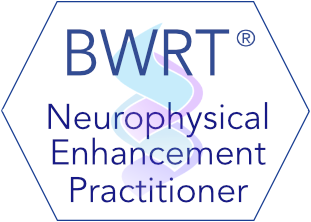Fast and Totally Modern
BrainWorking Recursive Therapy or BWRT





BrainWorking Recursive Therapy or BWRT is the new kid on the block in the world of psychological therapy. It’s quick, effective and doesn’t rely on digging around in your past or exploring your intimate details. It doesn’t rely on you doing stuff every day to maintain the changes it makes, either – there’s no tapping, making notes, or finding a quiet place to sit and be still while you concentrate on that elusive ‘moment of now’. It creates beneficial change which needs no supporting or reinforcement because it’s systemic, that is, it becomes part of your ‘natural self’.
“The New Kid on the block – Sassy, smart, fast, and totally modern! “
Most therapies require the client to do one of two things:
- Talk at length about their problem so the practitioner can either locate the cause and devise a plan to deal with it, whether that’s tapping, talking, stroking, writing about it or going into
- Experience the troubling process vividly and in all its complexity so that they can gradually desensitise
There’s no doubt those models work and usually work quite well, which is why they’ve been used for years… but BrainWorking Recursive Therapy – or BWRT, as it’s usually known – uses a totally different process to do what it does. It works directly with the part of the brain that stores all sorts of patterns of behaviour, psychological responses that fire up automatically in response to a trigger. So, when somebody tosses something towards you, you automatically try to catch it. You don’t think about it first. If you knock something off a shelf, your hand shoots out without thinking to try to catch it before it hits the floor. The brain has recognised a pattern and responded in the best way it knows to deal with the situation.
You weren’t born knowing those things, so they had to be learnt, programmed in in some way. Repetition does it so well that you can learn to do some things without much thought, like writing your name, or using a knife and fork. But emotion is what does it best, especially fear, since that part of the brain is intent upon your survival. And here’s the thing: once that pattern is taken on board it must be activated whenever the trigger is present. So, if a small child observes their mother screaming like a banshee and running for the hills at the sight of a spider, that part of the brain learns that spiders are a threat to survival. It makes no difference whether or not the child remembers the event, or even logically understands that most spiders can’t hurt us – that survival part of the brain doesn’t ‘do’ logic – the pattern that must be obeyed is that spiders are a threat to survival and the individual must escape! It matters not one jot if you know what the trigger is or not, since it’s jolly well going to fire up anyway.
It’s exactly the same with any trigger for anxiety, phobia response, stress or any other unwanted psychological process – something has programmed it in there and by the time we know what’s happening it’s too late to stop it. The trigger was fired in a part of the brain we cannot easily get to and so trying to stop it with conscious thoughts and common-sense is roughly like trying to get water back into a hose pipe… Once it’s flowing it will keep on flowing until you (a) bung the end up and hope the pressure doesn’t increase enough to burst the bung, or (b) turn off the tap.
The best therapies seek to turn off that metaphorical tap and that’s exactly what most modern methods do. But while most have to find out where the tap is first, the BWRT Practitioner already knows exactly where to find it.
And that’s exactly what makes this new kid on the block so different…
©2020, Terence Watts





